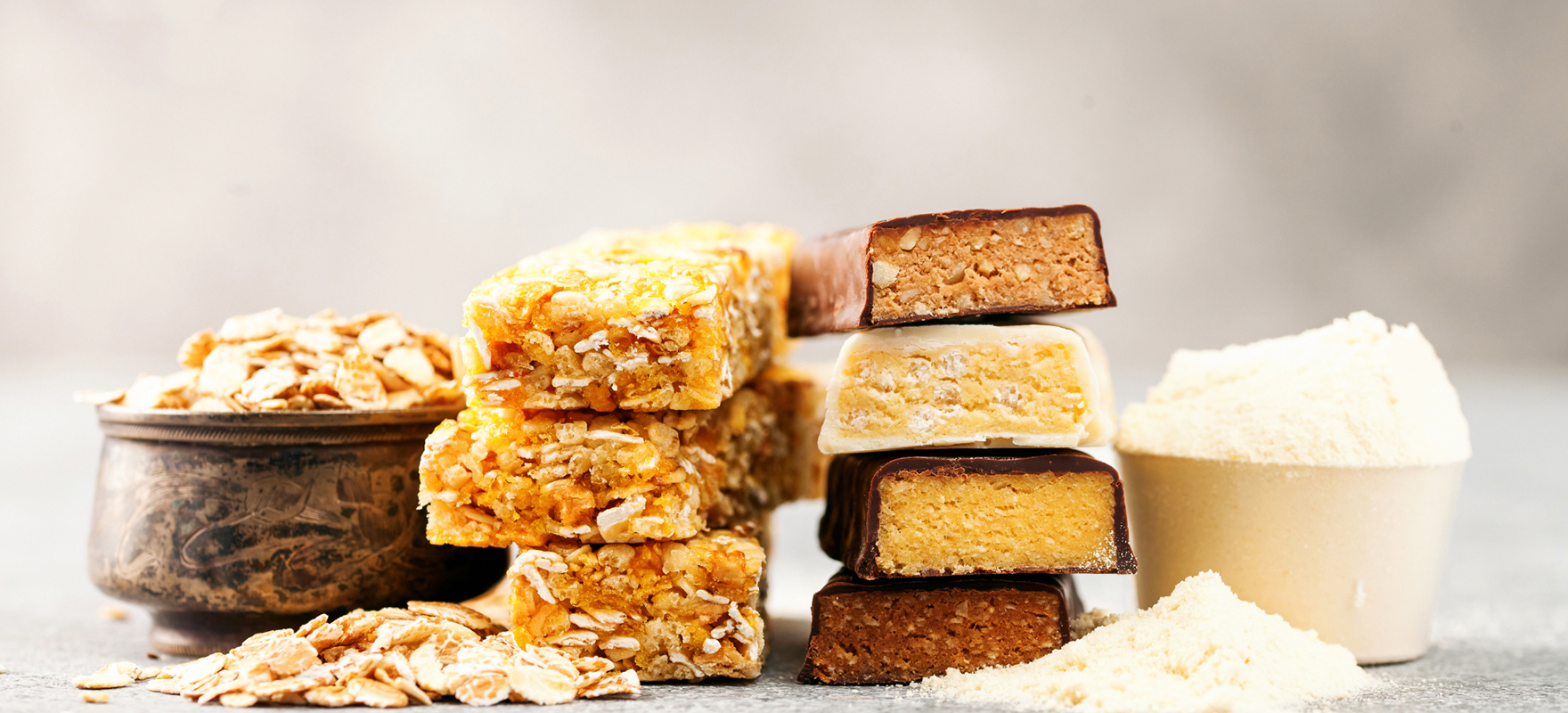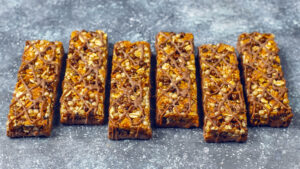Nutrient-packed snack bars have become a popular snack choice for people who are always on the go. These bars are convenient and easy to carry around, making them a great option for busy individuals who want to stay fueled and energized throughout the day. There are many different types of bars available on the market, each with its own unique set of ingredients and nutritional benefits.
One of the most popular types of bars is granola bars. These bars are typically made with oats, nuts, and dried fruit, and are often sweetened with honey or other natural sweeteners. They are a great source of fiber and complex carbohydrates, which can help to keep you feeling full and satisfied between meals. Some granola bars also contain added protein, which can help to support muscle growth and repair.
Protein bars are another popular type of nutrient-packed bar. These bars are specifically designed to provide a high amount of protein, which can help to support muscle growth and repair. They are often made with ingredients like whey protein, soy protein, or pea protein, and may also contain other nutrients like vitamins and minerals. Protein bars are a great option for athletes or anyone who is looking to increase their protein intake.
Evolution of Nutrient Bars
Nutrient bars have come a long way since their inception. From humble beginnings as a chocolate bar to the healthy alternative granola bar, and on to high protein nutrition bars, the evolution of nutrient bars has been fascinating. Let’s take a closer look at the different stages of this evolution.
The Birth of Granola Bars
Granola bars were the first nutrient bars to hit the market. They were created in the late 1800s as a health food for people with digestive problems. The first granola bar was made by combining oats, nuts, and honey, and baking them into a bar. The granola bar gained popularity in the 1970s as a healthy snack and meal replacement option.
The Rise of Protein Bars
Protein bars gained popularity in the 1990s as a way for athletes to get a quick and easy source of protein. The first protein bars were made with whey protein and were marketed to bodybuilders and athletes. Over time, protein bars have become more mainstream and are now consumed by a wide variety of people. Today, protein bars come in a variety of flavors and are made with a variety of protein sources, including whey, soy, and pea protein.
Diversification of Health Bars
In recent years, the health bar market has exploded, and there are now more options than ever before. Health bars are made with a variety of ingredients, including fruits, nuts, seeds, and grains. Some health bars are designed to be low in sugar, while others are designed to be high in fiber or protein. Some bars are designed to be gluten-free, vegan, or paleo-friendly.
Overall, the evolution of nutrient bars has been driven by a desire for convenience, health, and taste. As consumers become more health-conscious, the demand for nutrient bars that are both healthy and tasty is likely to continue to grow.
Nutritional Profiles and Benefits
Nutrient-packed bars come in a variety of flavours and types. They are convenient, easy to carry, and can provide a quick energy boost. Granola bars are a popular type of nutrient-packed bars that are often marketed as a healthy snack. Granola bars are a good source of protein, fiber, and healthy fats. According to Healthline, 1/2 cup (50 grams) of Kellogg’s Low Fat Granola contains 4.4 grams of protein and 195 calories.
Protein bars are another type of nutrient-packed bars that are often used by athletes and fitness enthusiasts to support muscle growth and recovery. Protein bars are a good source of protein and can help meet daily protein requirements. According to Verywell Fit, some protein bars can contain up to 20 grams of protein per serving.
Specialized bars are also available for people with specific dietary needs, such as gluten-free, vegan, or keto. These bars are formulated to meet specific nutritional requirements and can be a convenient way to ensure that people with dietary restrictions are getting the nutrients they need. For example, Healthline recommends the Quest Nutrition Protein Bar for people on a keto diet. This bar contains 14 grams of protein and 9 grams of fiber, making it a good choice for people on a low-carb diet.
In conclusion, nutrient-packed bars can be a convenient and healthy snack option for people with busy lifestyles. They are available in a variety of flavors and types, and can be formulated to meet specific dietary needs. When choosing a nutrient-packed bar, it is important to read the label carefully and choose a bar that contains a balanced mix of macro and micro nutrients.
Manufacturing and Quality Control
Ingredients Sourcing
The quality of ingredients used in the production of nutrient-packed bars is crucial to their nutritional value and taste. Manufacturers source ingredients from a variety of suppliers, and it is important to ensure that the ingredients meet strict quality standards. This involves checking the purity, freshness, and nutritional value of the ingredients before they are used in production.
To ensure quality, manufacturers often establish long-term relationships with suppliers and conduct regular audits of their facilities. They also test the ingredients for contaminants such as pesticides, heavy metals, and pathogens. Some manufacturers also use organic and non-GMO ingredients to appeal to health-conscious consumers.
Production Processes
The production of nutrient-packed bars involves several stages, including mixing, molding, baking, enrobing, and packaging. The ingredients are mixed in large batches and then molded into the desired shape. The bars are then baked or toasted to give them a crunchy texture.
Enrobing is the process of coating the bars with a layer of chocolate or yogurt. This gives the bars a smooth and attractive appearance. The enrobing solution is carefully controlled to maintain the correct temperature and consistency, ensuring an even coating on each bar.
Quality control is critical at every stage of the production process. Manufacturers use sophisticated equipment to monitor the quality of the bars, including their texture, flavor, and nutritional content. They also conduct regular tests to ensure that the bars meet strict quality standards and are safe for consumption.
Consumer Trends
There is an increasing health consciousness among consumers. As people become more aware of the benefits of a healthy diet, they are seeking out food products that are rich in nutrients and low in calories. Nutrient-packed bars are an ideal option for people who are always on the go and do not have time to prepare a meal. They are also a convenient snack option for people who are trying to maintain a healthy lifestyle.
Another trend that is driving the growth of the nutrient-packed bar market is the increasing demand for plant-based products. Many consumers are looking for food products that are sustainable and environmentally friendly. Plant-based bars are a great option for people who are looking for a healthy and sustainable snack option. They are made from natural ingredients and are free from artificial flavors and preservatives.
In conclusion, the nutrient-packed bar market is poised for significant growth in the coming years. Consumers are increasingly seeking out healthy and convenient snack options, and nutrient-packed bars are an ideal option.
Leading image: Image by Freepik





